

Aren’t we fortunate that Adele has had such success to make music industry types want to find more like her? Enter Emeli Sande. This Scotswoman meets much of the criteria for the thick-throated female singer/songwriter. Having a hand in co-writing her own material, the requisite men issues to give her something to write about, and the strong personality to pull it off, Sande is all set. Her debut, Our Version Of Events kicks off with one of her standout numbers, “Heaven.” Lifting its beat pattern directly from Massive Attack’s “Unfinished Sympathy,” this trick doesn’t work against “Heaven.” Rather, it kicks it up to a familiar space in the listener’s mind, making it an instant hit. Breakbeats line most of Our Version Of Events giving it a British flavor. Sande, however, takes her vocal cues from classic, and contemporary, impassioned R&B singers. The soul-fused “My Kind Of Love” is such a powerhouse of emotion it crunches with intensity. Our Version Of Events is not wholly original—neither is Sande’s Salt ‘n’ Pepa hairdo—but don’t hold it against her, she more than makes up for it with her sincerity, plus, she sounds good. 
Audio clip: Adobe Flash Player (version 9 or above) is required to play this audio clip. Download the latest version here. You also need to have JavaScript enabled in your browser.
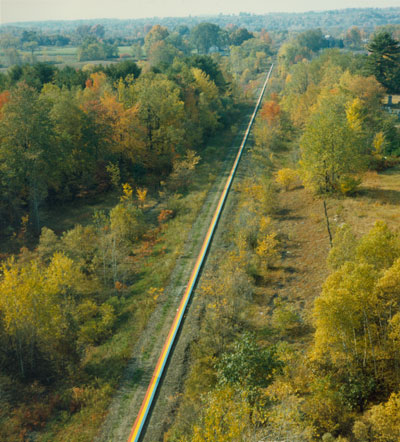
Stephen Long, 1968 © Patricia Johanson

This summer the Museum of Contemporary Art, Los Angeles is giving the land art movement its long-overdue, very first retrospective. Ends of the Earth: Land Art to 1974 looks at a small chunk of land art’s history – barely a decade, from its birth in the sixties to its commercial overhaul in the mid-seventies – and attempts to untangle the messy motivations behind it.
Land art was singularly revolutionary in a period full of revolution. While artists in New York and LA were using deliberately worthless trash as sculpture material or creating works with a silkscreen printer instead of their hands, practitioners of land art literally removed themselves from the art institution. They created work out of raw firmament on sites chosen not only for their workability, but for their remoteness as well. Land art was all natural (pieces were shaped out of the environment, never brought in from somewhere else), unmoving, and purposefully left to the mercy of the elements just like any other organic creation. It was as far from the art machine of galleries, collectors’ auctions, and museums that you could get. Ends of the Earth portrays land art’s origins for what they were: equal parts thought-provoking, exploratory, and reactionary.
Slideshow
(more…)


Last month the third annual NoHo Design District Festival filled the downtown stretch between Bowery and Broadway with events and installations from both established and emerging talents. NoHo, with its long-standing reputation as an artists’ community, was the perfect atmosphere for the edgy, collaborative experience NDD organizers had in mind.
FABnyc, a program aimed at reinvigorating public spaces, asked visitors to reconsider the sidewalk beneath their feet with “Music Machine” by multidisciplinary artist Sonni. Bringing life to the otherwise dim alleyway behind the former CBGB was Sonni’s sidewalk mural of bright, primary-colored cartoon illustrations. A designer from Baggu was on hand to paint the pop-inspired brand’s grapefruit, mint, or citron-colored leather pouches with emoticons on the spot. On the second floor patio of the Standard, East Village Hotel, visitors found shelter from the sun inside designer Mat Gagnon’s “Knit Fort,” a flexible, multi-dimensional structure of woven wood and rubber cord that can be expanded and shaped according to one’s needs.
Slideshow
(more…)
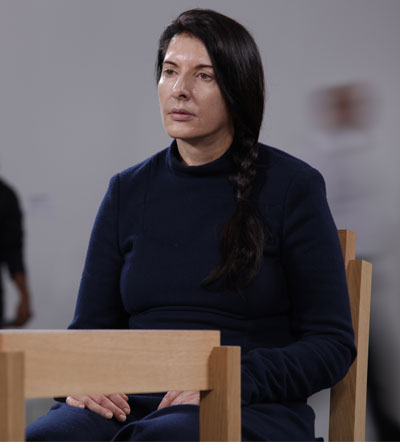
Marina Abramović. Photo Credit: David Smoler

Over the stretch of her thirty-year tenure as performance art’s matriarch, Marina Abramovic has unceasingly pushed the boundaries of the corporeal. In the Spring of 2010, the Museum of Modern Art housed a retrospective of her performances to date, as a troupe of young artists re-enacted highlights of her earlier work. The centerpiece of the show,
The Artist is Present, is explored this month in a new documentary. Evolving from a previous performance –
Nightsea Crossing – in which she and Ulay, her former lover and collaborator, would sit silently, eye to eye, hour upon hour. This time, Ulay was to be replaced by whoever should wish to partake, as the audience was invited to silently commune with Abramovic for the duration of their choosing.
Filmmaker Matthew Akers originally approached the prospect of filming Abramovic with a healthy skepticism: “I had been to school for sculpture and I’d never witnessed great performance art so I was suspicious. When I met her she was incredibly charming, we hit it off right away, but I told her, if we do this, you can’t have any editorial control, that means if I find out stuff that’s less flattering to you, you’re going to have to let me use that. She said – listen little baby – she calls everyone little baby – you can have total control, I’ll give you the keys to my apartment, don’t worry – and about a week later she gave me the keys to her apartment.”
(more…)
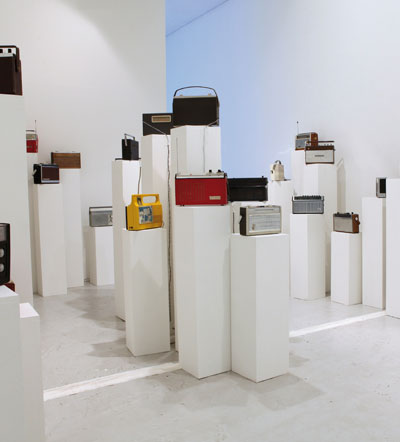
Dans l'(((Onde))), installation view galerie du jour agne`s b. Paris

This week agnès b. Galerie opens
Musique Plastique, a lively multimedia exhibition that was first shown in Paris last year. “Musique Plastique” asks a loaded question: What is the relationship between music and visual art? Do the two creative impulses come from the same place, or do they encourage and inspire one another? Why are so many musicians compelled to paint, and vice versa?
“Musique Plastique” is small, but its ambitious scope—post-punk, synth pop, folk, video, photography, sculpture—does its best to answer these questions. The show’s biggest names are probably Jonas Mekas (from the art world) and Thurston Moore (from music), but every player involved is fascinating. Daniel Johnston, the American lauded singer- songwriter who’s worked on everything from rock operas to a documentary about his own schizophrenia, will present his visual art. Swedish electronic artist Tobias Bernstrup will share his unique process of using musical performance as a step to making visual art. Étienne Charry, who since his days as the guitarist for Oui Oui with Michel Gondry has become a French pop chameleon, will show his experimental spirit visually as well. In all, twenty musician-artists are represented.
Musique Plastique opens June 14th at agnès b. Galerie Boutique. A compilation of music featured in the show is available for free at www.50howardstreet.com.

Van Jones at Power Shift 2011 in Washington D.C./Kasey Baker

When world leaders meet in Rio de Janeiro next week for a conference on sustainable development, they will do so in an economic climate that continues to be marked in red, with high unemployment numbers, sovereign debt crises, and the threat of the Euro Zone’s disintegration. But according to a new report by the United Nations’ International Labour Organization (ILO) in collaboration with the UN Environment Programme (UNEP), a promising economic strategy from here forward may come in shades of green. The study concludes that a net gain of as many as 60 million green jobs is waiting to be seized upon worldwide with broad implications for reducing poverty.
Just how opportunities to usher in a new green economy were squandered here in the United States over the past four years is by now a well-worn subject. According to Van Jones, President Obama’s former Special Advisor on Green Jobs, meaningful progress in this country would have required the Senate to follow the House in passing legislation that set a price on carbon. He tells PLANET that the $80 billion dollars in public investments devoted to green industries and projects under Obama was only the first step. While 2.4 million green jobs were added, as estimated by the Brookings Institute, Jones sees that as a small fraction of what might have been possible with the cooperation of Congress.
“Cap and trade would have given the private sector an incentive to play,” Jones said in an interview, suggesting that the business community
(more…)
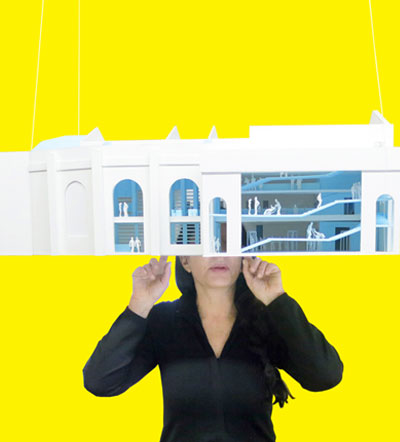
Marina with Study Model OMA

Rem Koolhaas and Shohei Shigematsu of the Dutch architecture firm OMA will lead the design and construction of Marina Abramović’s performance center, the Marina Abramović Institute for the Preservation of Performance Art (MAI). The Institute, for which funding is currently being procured, will be located in a former theater in Hudson, New York. The large space is designed to host long-duration performances as well as workshops, lectures and festivals, all centered on time-based, performance, or otherwise fleeting art—the work that can’t be stored in a museum. The purpose of MAI is to preserve the history of immaterial art while also creating a laboratory to explore new collaborations and cross-genre practices.
OMA seems a proper fit for Abramović’s institute. Founded in 1975 by Koolhaus and others, the firm has designed many innovative art spaces around the world, including the irregular, inverted Casa da Música in Porto (2005), and the vertically “stacked” Wyly Theater in Dallas (with REX, 2009). Besides the stadium-like main performance space, which will seat an astonishing 650 people, MIA will have rooms specifically designed for study, meditation, exercise, and crystals.
Slideshow
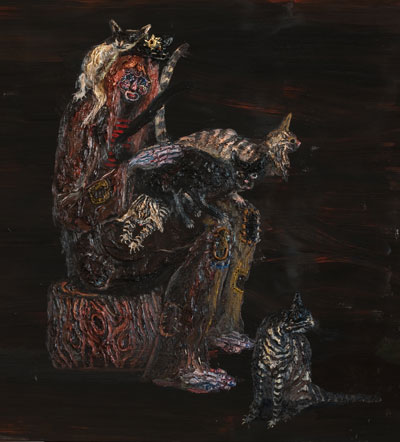
Captain 68 x 84 oil on linen 2012

Allison Schulnik is one of my favorite artists of the moment. Over the past couple of years, we’ve covered her (
here) and collaborated with her on a piece for our EARTH BY series (
here). The thickly textured physicality of her paintings, combined with characters, scenes, and still-lifes that evoke equally tangible emotions, is what makes her work so unique and special to me. In a new exhibit, titled “Salty Air”, she continues to explore narrative and fable in her paintings. This body of work is inspired by old sea-faring tales, most notably the Little Mermaid as told by Hans Christian Anderson, exploring themes of freedom, solitude, and isolation. The show opened last week at the Mark Moore Gallery in Los Angeles and will be up through July 7. Allison was kind enough to provide PLANET with an exclusive slideshow of the work.
Slideshow

Gnucci at Music Doc

While Cannes soaked up all the attention last month, a different kind of festival was making waves in Havana. The traveling Swedish festival Music Doc is the best weathervane around for what’s new and interesting in Nordic art, across all media. Though the centerpiece of any Music Doc event is a movie or documentary about music, the organization takes pride in making the experience a multifaceted one: live bands, dance shows, and even spirited lectures can precede a screening. Many independent film festivals now travel, but few do it as dexterously as Music Doc, which juggles DJs, visual artists, and musicians from every genre between continents. Though the festival features some of Sweden’s most fascinating acts, much of the work is still under the radar anywhere else in the US—this is a rare opportunity to step inside the culture.
Music Doc began its 2012 circuit in Chile; it completes a two-night event at the Hotel Americano in New York on Wednesday. Several artists, many of them Swedes transplanted to New York, will hold a discussion on YouTube before a screening of the documentary Stocktown X South Africa. A DJ set afterwards includes one of the men featured in the film.
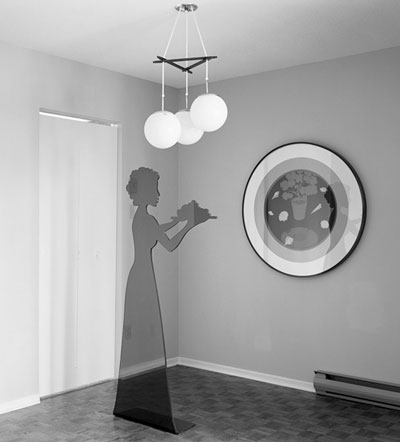
Lynne Cohen, Model Dining Room

Originally published in 1987 and described by David Byrne as the “flowering of our civilization,” the updated and expanded version of Lynne Cohen’s
Occupied Territory offers a stark commentary on how we have—and have not—progressed in our occupation of the world. When compared with the original
Occupied, the re-publication feels more representative of a
de-flowering of civilization, or a glance at old magazines and newspapers that subtly hint at how we have arrived at our current social and political milieu.
The timely shift of the connotation of the word occupy—both in general terms and in relation to Occupied Territories—creates an interesting twist in the current significance of this work. In 1987, to occupy politically was an act of aggression, a means of control and domination. With the Occupy movement of 2011, the popular implication of occupation has come to be a mixture of hope, anger, and a determination to undo the management-centric, ultimately vapid cultural practices and social aesthetics Cohen captures in her work. The Occupy movement, with its fluid structure and spontaneity, seems in many ways a direct response to the hollow occupation Cohen’s photographs captured 25 years ago. The movement’s terms seem like an attempt to overcome it.
Slideshow
(more…)

![]()
![]()




 Facebook
Facebook Permalink
Permalink Digg
Digg Reddit
Reddit LinkedIn
LinkedIn StumbleUpon
StumbleUpon Tumblr
Tumblr











